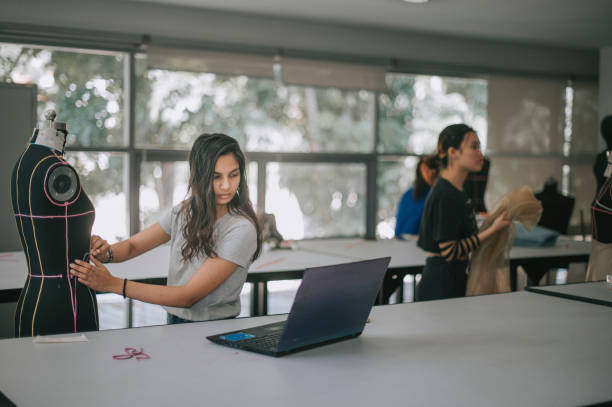Skills You Gain from a Fashion Designing Course That Make You Industry-Ready
Skills You Gain from a Fashion Designing Course That Make You Industry-Ready
Blog Article
The fashion world is fast-paced, competitive, and constantly evolving. To succeed, aspiring designers need more than creativity — they require technical expertise, industry knowledge, and practical skills. That’s where a Fashion Designing Course comes in, providing a comprehensive foundation that transforms passion into profession.

If you dream of working with leading fashion houses, launching your own brand, or creating trendsetting designs, enrolling in a Fashion Designing Course is your first step. These courses equip students with essential skills that make them industry-ready, preparing them for real-world challenges and global opportunities.
In this blog, explore the must-have skills a Fashion Designing Course develops, ensuring you’re ready to make your mark in the fashion industry.
Why Practical Skills Matter in Fashion Designing
Fashion is about more than aesthetic appeal — it combines art, science, and business. To thrive, designers must:
✔️ Understand fabrics, construction, and garment functionality
✔️ Stay updated with global fashion trends
✔️ Use modern design software and technology
✔️ Manage client expectations and market demands
✔️ Adapt to sustainability and ethical production practices
A well-structured Fashion Designing Course bridges this gap, nurturing creativity while building technical and professional competencies.
Essential Industry-Ready Skills You Gain from a Fashion Designing Course
1. Fashion Illustration and Creative Concept Development
Students master sketching, drawing, and fashion illustration to communicate design ideas effectively. You’ll learn:
✔️ Hand-drawn and digital fashion sketching
✔️ Developing mood boards and concept presentations
✔️ Translating creative ideas into tangible design plans
Why It Matters: Clear visual communication is key to presenting ideas to clients, teams, or manufacturers.
2. Textile Knowledge and Fabric Handling
A deep understanding of textiles is essential. In your course, you’ll explore:
✔️ Different fabric types, textures, and properties
✔️ How fabrics behave in construction and wear
✔️ Sustainable and innovative fabric options
Why It Matters: The right fabric selection impacts comfort, durability, aesthetics, and sustainability.
3. Garment Construction and Pattern Making
Practical training in turning designs into real garments, including:
✔️ Pattern drafting and draping techniques
✔️ Cutting, sewing, and finishing garments
✔️ Experimenting with silhouettes and structure
Why It Matters: A designer’s ability to construct garments ensures design feasibility and quality production.
4. Computer-Aided Design (CAD) for Fashion
Students gain proficiency in using fashion design software, including:
✔️ CAD tools for 2D pattern drafting and 3D garment visualization
✔️ Tech packs for manufacturers
✔️ Digital illustrations and presentations
Why It Matters: The global fashion industry relies on digital tools for efficiency and precise design execution.
5. Fashion Forecasting and Trend Analysis
You’ll learn how to research and predict fashion trends through:
✔️ Market studies and consumer behavior analysis
✔️ Fashion weeks, runway reviews, and forecasting reports
✔️ Understanding color, fabric, and design trends
Why It Matters: Staying ahead of trends keeps your designs relevant and competitive.
6. Sustainable and Ethical Fashion Practices
A good Fashion Designing Course emphasizes:
✔️ Eco-friendly materials and processes
✔️ Waste reduction and circular fashion
✔️ Ethical labor practices and fair trade principles
Why It Matters: The future of fashion is sustainable. Industry-ready designers must align with global environmental standards.
7. Fashion Styling and Visual Merchandising
Students gain insight into:
✔️ Styling garments for photoshoots, runways, or retail
✔️ Creating appealing displays and in-store experiences
✔️ Enhancing product presentation to attract consumers
Why It Matters: Styling and merchandising directly influence brand image and sales performance.
8. Portfolio Development and Presentation Skills
Throughout the course, students build a professional portfolio showcasing:
✔️ Original sketches, designs, and completed garments
✔️ Research projects and mood boards
✔️ Photographs of styled looks and fashion shoots
Why It Matters: Your portfolio is your ticket to job interviews, internships, and industry recognition.